Question:1
Which vehicles are permitted to enter a freeway?
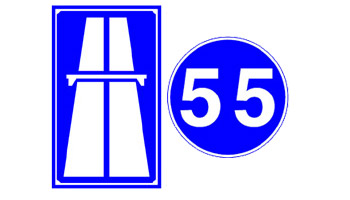
Category : Rules and Regulations
Question:2
When is it prohibited to stop or park a vehicle?
Category : Rules and Regulations
Question:3
Mark the correct sentence:
Category : Rules and Regulations
Question:4
When does the transport of high freight require the approval of a “police officer”?
Category : Rules and Regulations
Question:5
What should a driver do when he approaches a road section on which oil was spilled?
Category : Safety
Question:6
What is the meaning of the following traffic sign?

Category : Traffic Signs
Question:7
What are you required to do when the following road sign is placed?

Category : Traffic Signs
Question:8
Is it permitted to stop any vehicle other than a taxi where the following signpost is placed?
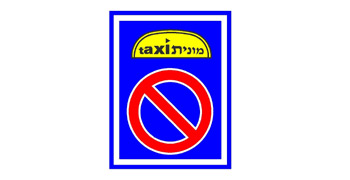
Category : Traffic Signs
Question:9
What is the meaning of this road sign?
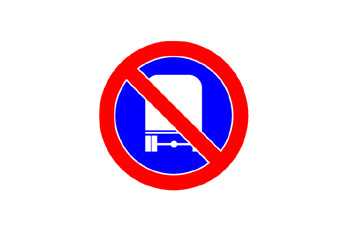
Category : Traffic Signs
Question:10
According to the law, the semi trailer (which is part of a "articulated vehicle"):
Category : Rules and Regulations
Question:11
Who is permitted to drive a “security vehicle” or a “rescue vehicle”?
Category : Rules and Regulations
Question:12
What does it mean when a “stop” sign is placed on the left side of the roadway only?

Category : Traffic Signs
Question:13
Driving on a wet road creates:
Category : Safety
Question:14
What is the meaning of this traffic sign?

Category : Traffic Signs
Question:15
What is the required conduct of a driver that exits a dirt road and intends to enter a paved road?

Category : Safety
Question:16
What is the statutory obligation to slow down which applies to drivers?
Category : Rules and Regulations
Question:17
What are you (vehicle no. 3) required to do when approaching the following intersection (the red vehicle is not an emergency vehicle)?
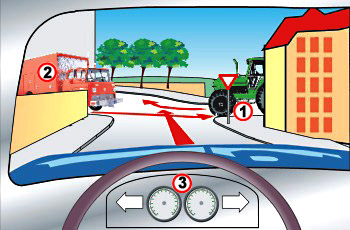
Category : Rules and Regulations
Question:18
When there is a “no left turn” sign in an intersection:
Category : Rules and Regulations
Question:19
The following penalties may be imposed by a court of law on a driver convicted of committing a traffic offence:
Category : Rules and Regulations
Question:20
What is the meaning of the following traffic sign?
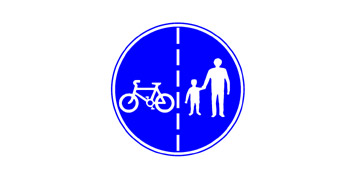
Category : Traffic Signs
Question:21
What is the imminent danger when a vehicle skids whilst driving?
Category : Safety
Question:22
What characterizes a state of driving in which proper distance from the vehicle in front is kept?
Category : Safety
Question:23
How is a driver required to conduct himself when intending to overtake a school transport bus that stopped to pick-up and let down children?
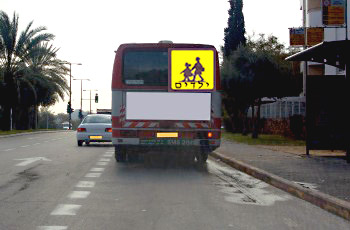
Category : Safety
Question:24
Is it permitted to drive a vehicle while one of the doors is open?
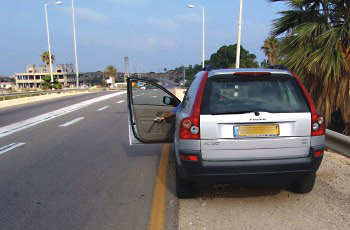
Category : Rules and Regulations
Question:25
Is it permitted to drive a heavy vehicle when the air pressure in the braking system is below the required minimum?
Category : Rules and Regulations
Question:26
What might happen as a result of brake over- heating?
Category : Know Your Vehicle
Question:27
It is obligatory to hold two safety shoes in commercial vehicles with an all up weight that exceeds:
Category : Rules and Regulations
Question:28
It is prohibited to start overtaking without verifying
Category : Safety
Question:29
The following illustration shows an intersection with traffic signs. What is the correct manner of making a turn from street A to street C?
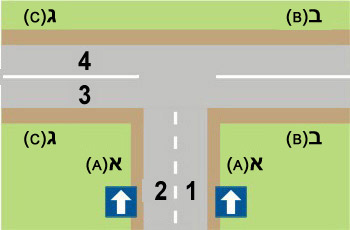
Category : Rules and Regulations
Question:30
What is the meaning of the following traffic sign?
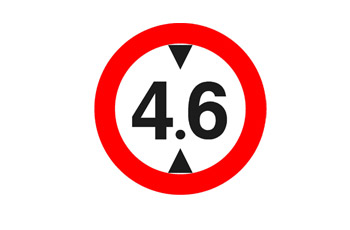
Category : Traffic Signs

